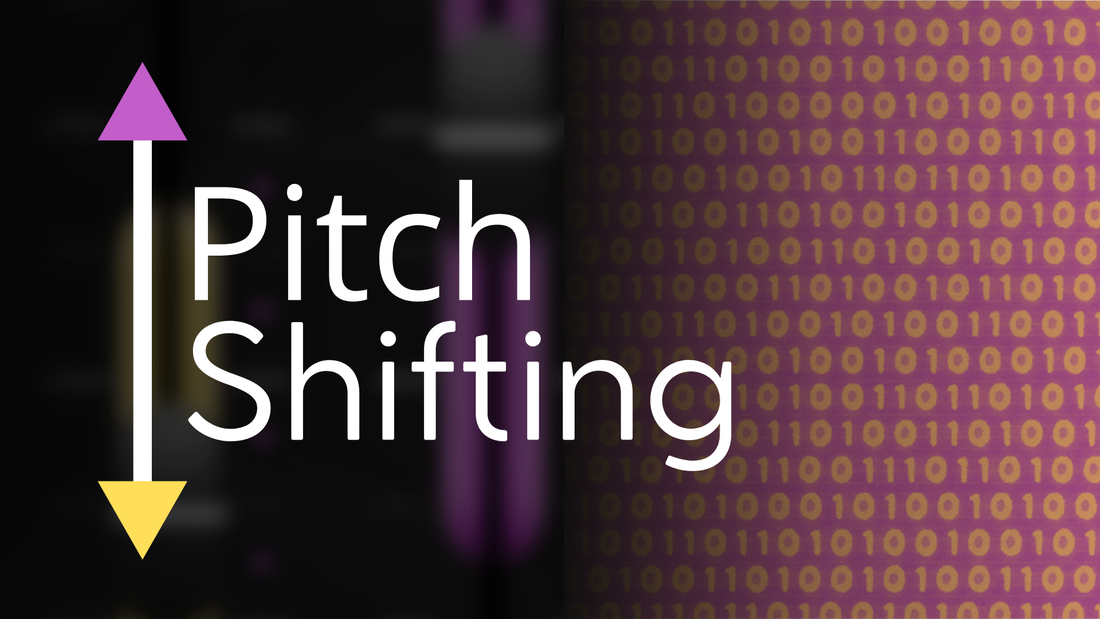Understanding Pitch Shifting: Techniques and Algorithms
Pitch shifting is a key audio processing technique widely used in music production, sound design, and live performance. Whether you're a musician looking to tweak a vocal track, a sound engineer adjusting harmonics, or a producer experimenting with unique effects, pitch shifting provides a versatile tool for manipulating the pitch of an audio signal. In this blog, we'll dive into what pitch shifting is, how it works, and explore the most common algorithms used to achieve it.
What is Pitch Shifting?
At its core, pitch shifting refers to changing the pitch of an audio signal without affecting its speed. This differs from time-stretching, where the duration of the signal changes along with the pitch. For example, if you increase the pitch of a sound by an octave using pitch shifting, the frequency doubles, but the tempo remains the same. This technique can be used creatively to harmonize instruments, correct vocal intonation, or craft unique soundscapes in audio production.
Octapus by. CARP Audio - Most versatile octaver on the market!
Understanding Octaves in Pitch Shifting and Octaver Plugins
In pitch shifting, one of the most common transformations involves shifting audio up or down by an octave. An octave represents a doubling or halving of a sound’s frequency. For instance, if the fundamental frequency of a note is 440 Hz (A4), shifting it up by one octave results in a frequency of 880 Hz (A5), and shifting it down by an octave lowers the frequency to 220 Hz (A3). This concept forms the basis of many creative audio tools, including Octapus.
Popular Pitch-Shifting Algorithms
Several algorithms make pitch shifting possible. Each approach has its strengths and is suited to different use cases depending on sound quality, processing power, and desired output. Below are some of the most popular algorithms:
1. Phase Vocoder
The phase vocoder is one of the most common pitch-shifting algorithms, especially for real-time applications. It works by transforming the signal into the frequency domain using the Short-Time Fourier Transform (STFT). The signal is divided into overlapping frames, and each frame's phase and magnitude are analyzed. The phase is then modified to achieve the desired pitch shift, and the audio is reconstructed through inverse transformation.
- Pros: It maintains the harmonic structure well and is computationally efficient.
- Cons: Artifacts can occur when shifting by larger intervals, making it less ideal for drastic pitch changes.
2. Time-Domain Pitch Shifting (TD-PSOLA)
Time-domain pitch shifting, particularly the PSOLA (Pitch Synchronous Overlap and Add) method, is another widely used approach. PSOLA divides the signal into small overlapping segments, or "grains," which are then moved closer together (for raising pitch) or farther apart (for lowering pitch). This method works best for monophonic signals like vocals.
- Pros: High-quality results for speech and simple melodic content.
- Cons: Not as effective for complex polyphonic signals or wide pitch changes.
3. Granular Synthesis
Granular synthesis involves breaking down the audio signal into very short grains (between 1-100ms) and then manipulating these grains to achieve the desired pitch shift. The grains can be time-stretched, pitch-shifted, and reordered to create various effects. This technique excels at both subtle pitch adjustments and creative sound design.
- Pros: Great flexibility for both small and large pitch shifts, as well as extreme sound manipulation.
- Cons: Can introduce grainy artifacts, particularly with high-frequency content.
4. Harmonic/Percussive Separation (HPS)
HPS separates the harmonic and percussive components of a signal, allowing for individual pitch shifting of each part. Harmonic elements, such as melody or chords, are handled separately from transient elements like drum hits. This results in a cleaner pitch shift when working with full mixdowns or complex audio signals.
- Pros: Excellent for polyphonic material and complex mixes.
- Cons: Computationally intensive and less common in real-time applications.
5. Machine Learning Algorithms
Recently, machine learning-based algorithms have gained traction for pitch shifting. These algorithms, trained on large datasets, can predict and apply pitch changes more intelligently, minimizing artifacts and preserving audio quality even with drastic shifts. These are often found in high-end audio processing software and hardware.
- Pros: Extremely high-quality results with fewer artifacts.
- Cons: Requires significant processing power and can be slow for real-time applications.
Choosing the Right Pitch-Shifting Algorithm
The best pitch-shifting algorithm for you will depend on your specific needs. For subtle shifts in vocals or melodic instruments, PSOLA or a phase vocoder might be perfect. For more creative applications or sound design, granular synthesis offers flexibility and unique results. If working with full mixes or polyphonic content, consider algorithms like HPS or machine learning-driven tools.
Conclusion
At CARP Audio, we strive to provide tools and plugins that make pitch shifting seamless and professional. Whether you're looking for subtle corrections or dramatic shifts, understanding the algorithms behind the process can help you make informed decisions in your music and sound projects.



